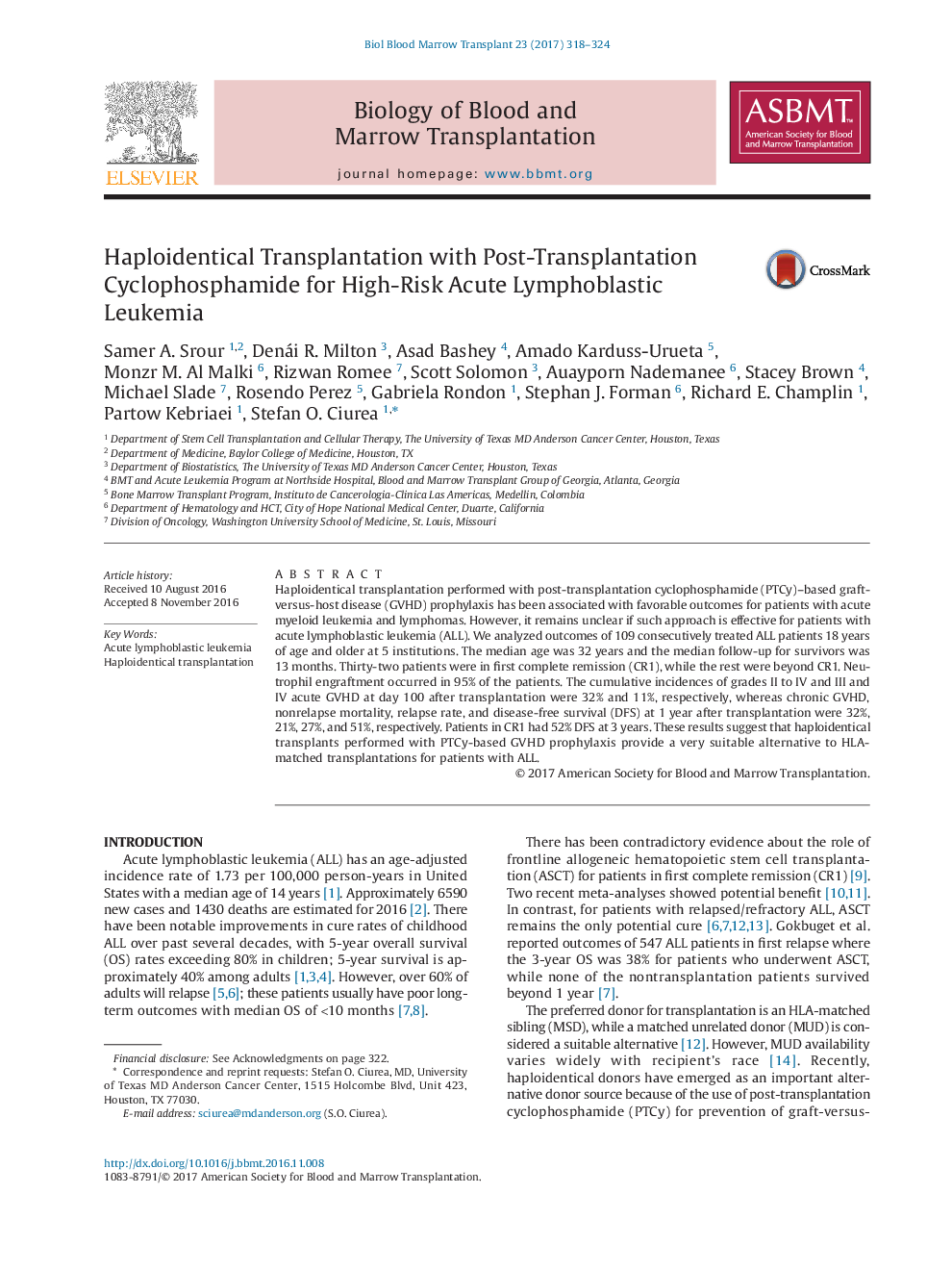| Article ID | Journal | Published Year | Pages | File Type |
|---|---|---|---|---|
| 5524252 | Biology of Blood and Marrow Transplantation | 2017 | 7 Pages |
â¢Haploidentical hematopoietic stem cell transplantation with post-transplantation cyclophosphamide for prevention of graft-versus-host disease is feasible for patients with acute lymphoblastic leukemiaâ¢Patients in first complete remission have very good long-term survivalâ¢Haploidentical donors provide a very suitable alternative to HLA-matched transplantation
Haploidentical transplantation performed with post-transplantation cyclophosphamide (PTCy)-based graft-versus-host disease (GVHD) prophylaxis has been associated with favorable outcomes for patients with acute myeloid leukemia and lymphomas. However, it remains unclear if such approach is effective for patients with acute lymphoblastic leukemia (ALL). We analyzed outcomes of 109 consecutively treated ALL patients 18 years of age and older at 5 institutions. The median age was 32 years and the median follow-up for survivors was 13 months. Thirty-two patients were in first complete remission (CR1), while the rest were beyond CR1. Neutrophil engraftment occurred in 95% of the patients. The cumulative incidences of grades II to IV and III and IV acute GVHD at day 100 after transplantation were 32% and 11%, respectively, whereas chronic GVHD, nonrelapse mortality, relapse rate, and disease-free survival (DFS) at 1 year after transplantation were 32%, 21%, 27%, and 51%, respectively. Patients in CR1 had 52% DFS at 3 years. These results suggest that haploidentical transplants performed with PTCy-based GVHD prophylaxis provide a very suitable alternative to HLA-matched transplantations for patients with ALL.
